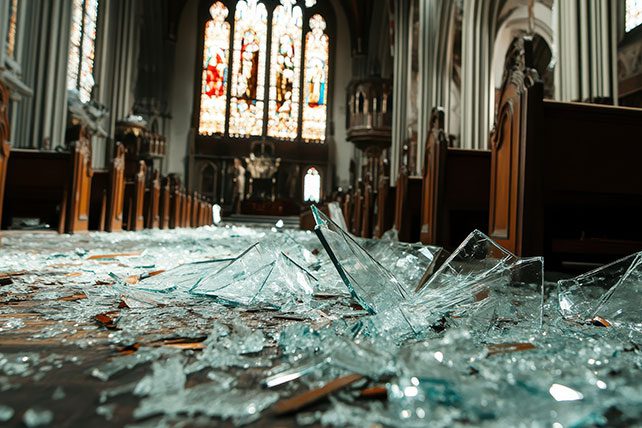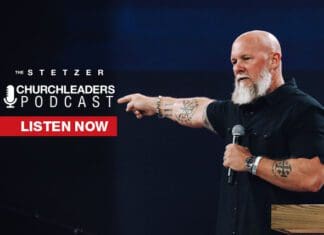As we talk with and coach leaders in missional living, one of the main hindrances is busyness. How can I live on mission when I’m already so busy? Can I really fit it into my schedule? Maybe it will be easier when things are less busy.
But the truth is mission will never fit into your schedule. The key is learning to live your whole life as mission, and seeing where that takes you, and how it shapes your schedule.
When a friend went missing
For weeks I had been hearing, “Mom, Yosselin was sick today. She wasn’t at school again. Do you think something’s wrong with her?”
Yosselin Randall was the little girl my then six-year-old sat next to in first grade. The truth is while I was concerned about her classmate, I didn’t know Yosselin, I wasn’t sure if something was wrong, and to be honest, I didn’t have time to figure it out.
The next morning as Ella again shared concern for her friend, the Holy Spirit stopped me dead in my tracks. “I’m speaking to your daughter. Her concern is from me.”
A devastating diagnosis
A week later we sat around Yosselin’s kitchen table as her grandparents told us she had stage four osteosarcoma, a type of bone cancer. The diagnosis was quick and the treatment and surgeries would be even quicker. This beautiful little girl now faced a year of chemotherapy, radiation and multiple surgeries.
The Randall family had been hit hard. In addition to the cancer diagnosis, recent flood damage had ripped apart the foundation of their small home. They were living in less than ideal quarters, working on renovations to fix the holes in the floor and ceiling from all the damage when the cancer diagnosis was delivered.
Responding to an invitation
After listening to their story and praying over their future, we left brokenhearted, feeling heavier than we had ever felt. That night I tossed and turned trying to get the day’s events out of my mind. Then God spoke to me very clearly: Somehow I knew He wanted us to build this family a new house.
I tried to ignore it and do my best to return to life as normal. But I just couldn’t shake it. I had no idea know how to build a house, but I knew God didn’t want them to fight this battle in a broken home.
For the next 10 months, we put all we had into the invitation we sensed God was giving us. My girls made bracelets to sell, raffled off tickets at football games, went to countless meetings with us, and played on the floor while we poured over details.
People showed up out of nowhere, everyone pitching in and playing a part. Our family and friends did so much, and in our effort, God met us and did more than we could imagine. In the end, we were able to hand the Randall family a key to a brand new, completely furnished, fully paid for, handicap accessible home.
Already busy enough
At the time this happened, my life was over-scheduled. I was too busy doing “really good things” to take time to notice the God things already happening around me.
I don’t remember all I gave up by stepping aside and pausing. It pales in comparison to all we’ve gained.
Mission will do that to you. It will draw you in so you can contribute, but it sends you out having been contributed to.
Jesus said it himself, “It is more blessed to give than to receive” (Acts 20:35).
3 steps towards change
Everyone’s life is busy these days. It seems like it’s just part of living in our culture nowadays. Here are a few things I’ve learned from our experience that have helped me continue to live on mission in the midst of a busy life:
1. Be a noticer
One of the core axioms we talk about in our coaching is that God is always present and at work, which means we always have an open invitation to join him.
It’s easy to get so wrapped up in the busyness of our schedules we forget to even notice what’s going on around us. Many times, the Bible says that Jesus paused and noticed someone or something. Some of His best work was done on His busiest days.
Noticing God at work is a muscle we develop as we use it. Before you walk into a store, a meeting or a restaurant—pause and ask God to help you notice where He’s working.
2. Turn aside
When God called to Moses from the burning bush it says Moses turned aside (Exodus 3:3). It was in turning aside to observe what he noticed that God then gave Moses his new assignment.
There are times I notice something and still don’t do anything with it. Sometimes it’s because of the many details in my head, other times I’m distracted by my kids arguing and, to be really honest, it is frequently the intimidation of not knowing what He might ask me to do.
But Moses was scared, too. In fact, He tried to talk God out of using Him, but I doubt at the end he looked back on his journey and wished he hadn’t turned aside to listen.
3. Join in
God is always inviting us to say “yes.” Our willingness paves the way to bigger things. Obedience is the key to opening the Kingdom of heaven.
The more we do say yes the more we become comfortable doing it. Find a small way to join in and say yes today. Notice what God might be doing and respond to Him. Join in and then see what happens!
Popping the bubble of busy
I don’t regret that our family invested 10 months of our lives to partner with God on mission for Yosselin’s family. I’m not sad we put some things on hold as we witnessed miracle after miracle. I’m not sad my girls got to experience a move of God that will forever change the way they believe.
I’m not sad my husband and I came together and popped the bubble of busy so we could be free to respond in a life-changing way. We paused our overbooked, ministry filled life and God gave us a taste of His under-utilized, but always overflowing power.
Mission will never fit into your schedule. It just won’t. But I’m telling you, do it anyway because it will change your life. Do it because there are families like Yosselin’s who have every reason to give up hope and who need to see a move of God.
And do it because there are families like yours who need to encounter the miraculous side of Him. Do it when the steps feel big and especially do it when the steps feel small because it’s often one step at a time that God builds a story.
Oh yeah, and about Yosselin…this year she is five years cancer free!
This article originally appeared here.












